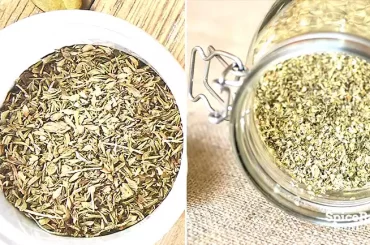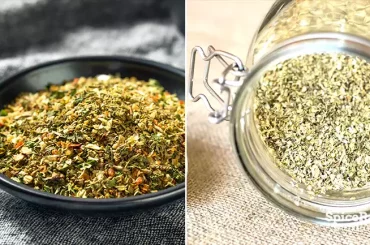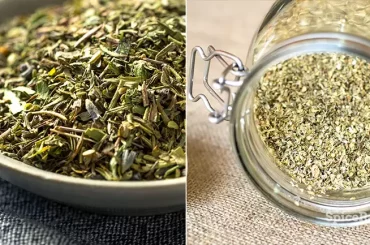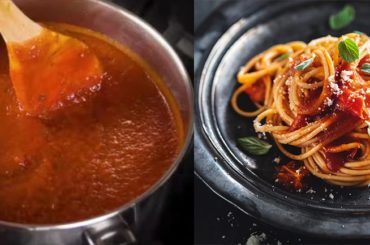Italian food has been regarded as “the most popular cuisine” in the world. The pioneers of pasta, pizza, risotto, and many more well-known dishes. How about the Italian sausage? Well, contrary to popular belief, the “Italian sausage” is just a term coined by Americans. And the two common varieties marketed in the US grocery stores as “Italian sausage” are hot or sweet/mild.
The most common spices in Italian sausage are as follows:

Once you have all these spices, you’re pretty much set to go. Some prefer to add more kinds of spices, and you may feel free to experiment and add more or customize the measurement of the spices to cater to your taste preferences.
Italian sausage is a dish that’s loved by many. If you are a fan of it, you’re definitely familiar with its taste and have no major problems replicating the recipe. So, let’s begin.
What Spices Are In Italian Sausage?
The spices aforementioned are the typical seasonings in Italian sausage. Fennel and black pepper are the two most important spices that are found in traditional Italian sausages. In order to capture the distinct Italian flavor, fennel is used. Usually, a mixture of whole, cracked, and ground fennel. The whole or cracked fennel will provide excellent visibility to the spice, whereas the ground funnel is responsible for that unique fennel flavor.
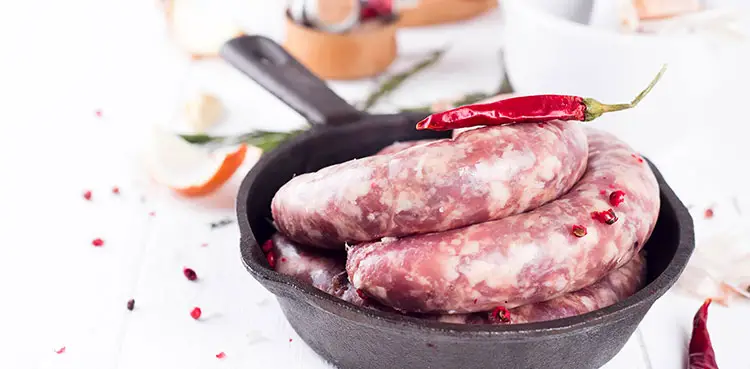
Other key ingredients in traditional Italian sausages are paprika, either crushed or ground form, and red pepper flakes. You use these spices, especially if you prefer hot Italian sausages. For the sweet or mild kind, you increase the amount of garlic and add some sugar to the mix.
Black Pepper
Typically, freshly cracked black pepper is preferred when making a batch of Italian sausages. If you enjoy that peppery taste, then feel free to increase the amount. A pound of meat usually calls for just a teaspoon of black pepper.
Black pepper is good for improving blood sugar control. It has anti-inflammatory properties and is high in antioxidants.
Italian Seasoning
Italian seasoning is in charge of adding a combination of multiple flavors to the meat mixture. No Italian sausage is complete without the use of this spice. Italian seasoning consists of many spices, which will be further discussed down below.
Parsley
Parsley has a peppery taste with a hint of earthiness. Typically used as a garnish, this spice is added to the meat texture and is needed for its flavor. You can utilize either fresh or dried parsley, but the amount required will depend on which one you’ll use. This spice is amazing for cancer prevention and eye health.
Onion
Onions contain a perfect balance of astringency and sweetness, especially when cooked. It’s often paired with garlic as these two spices jive well with one another. You can opt for onion powder or use fresh onion when adding it to the meat mixture. Onion has impressive health benefits such as cancer prevention, blood pressure moderation and is also a good source of vitamin C.
Did you know that the spices used in Chorizo Sausage are equally flavorful as that in Italian sausage? If interested, click here to learn more!
Garlic
Garlic provides a mild, nutty taste. Sometimes it can give off a sweet flavor, depending on the cooking. A teaspoon of minced garlic is suitable enough per pound of meat. If you want a more garlicky taste, feel free to add more. Garlic is known for combating sickness–such as the common cold, improving cholesterol levels, and improving bone health.
Fennel Seed
In order to capture that distinctive Italian sausage essence, fennel seeds are to be added. It gives the sausage its signature flavor and pretty much is the star of this show. Half a teaspoon of fennel seeds is enough for a pound of meat.
Fennel seeds are highly nutritious and contain cancer-fighting properties. It also has the potential to reduce inflammation and can relieve menopausal symptoms.
Paprika
Paprika is a versatile spice, and its flavor can range from mild and sweet to extremely hot. It also leaves a little bit of red coloring on the dish. Paprika is loaded with vitamins A, E, and B6. It also promotes healthy vision and can help reduce inflammation. Another health benefit from this spice is that it may have anticancer effects and can help improve one’s cholesterol and blood sugar levels.
Red Pepper Flakes
Red pepper flakes are a great way of adding more spiciness to your Italian sausage. This spice can be added to taste, but in a typical Italian sausage recipe, it only calls for ⅛ of a teaspoon. If you favor a spicier kick, you can definitely add some more. Red pepper flakes are said to help boost one’s metabolism and contain a lot of antioxidants.
Did you know that breakfast sausages are even more flavorful than Italian sausages? If interested in learning the facts, click here for a complete article.
What is Italian Seasoning?
Whenever you take a trip to the market, there’s a huge chance you’ve already seen this term in the “spices” section. But, what exactly is inside Italian seasoning?
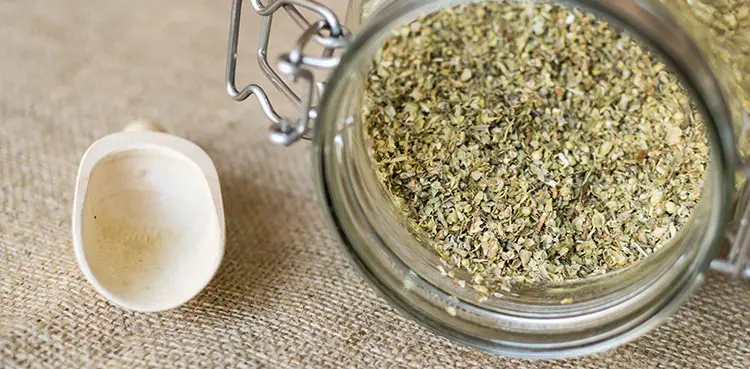
Generally speaking, Italian seasoning consists of various Italian herbs such as sage, basil, parsley, thyme, oregano, rosemary, and marjoram. Many use Italian seasoning as a one-for-all spice since most of their needed spices are already included. You can make homemade Italian seasoning, but buying the store-bought one may seem more cost-effective.
We have a complete article here on Italian Spices if you are interested in reading it.
All Other Ingredients In Italian Sausage
Besides the spices, other vital ingredients are needed when making Italian Sausage–like the meat itself. Here are the other ingredients when making Italian sausages.
Meat
A traditional Italian sausage is made with different types of meat and generally has a high percentage of fat. Most sausages use ground pork, but ground beef, lamb, or turkey can be used as meat substitutes.
If you don’t consume meat, you can opt for plant-based substitutes such as tofu, seitan, or textured vegetable protein.
Wine
Adding wine is a great way to boost flavor. Whether it be red or white wine, that will depend on your preference, but either is a great supplementary piece to Italian sausage. You can use the wine as a marinade for the meat or let it simmer in a pot while cooking the sausage to make it juicier.
Sausage Casing
Some opt to skip this out, so it’s entirely optional but, the casings are used to place the meat inside to give it that distinct sausage appearance.
Remember to soak the sausage casings in room temperature water for 60 minutes or more. Take out any cases that have leaks in them and use the perfectly fine ones. Putting the meat mixture inside the casing can be tedious; however, it makes for a fun experience!
Italian sausage consists of many spices, herbs, and also Italian seasoning. But have you ever thought of how a spice would differ from seasoning? To have your answers, just click here.
Vegetables
If you want to add more filling to your Italian sausage, adding vegetables is a great way to do so. You can use crushed bell peppers or celery and combine it with the meat, elevating and adding more variety to its flavor.
Why Should I Make My Own Italian Sausage?
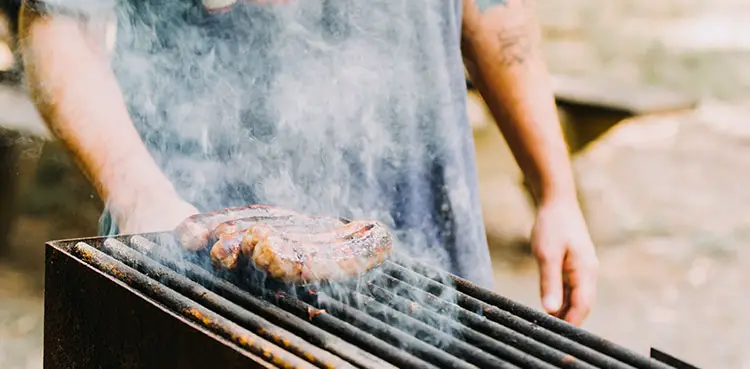
Making your own homemade Italian sausage means that you have total control over the ingredients and how much you actually put into making the recipe. You get to decide how much seasonings in the Italian sausage should be needed. Another plus is that if you grind your meat, you know precisely the quality.
Buying sausage from stores can pose a risk for having certain additives such as corn syrup and other mysterious “flavorings” that could come from anywhere.
The good news is that Italian sausage can be cooked and incorporated in many other recipes such as meatballs, pizza toppings, lasagna, casseroles, quesadillas, sausage patties, etc. the sky’s the limit!
Garlic is a versatile spice that even binds well with chicken soup. We have an article about the best spices used in the chicken soup here if you are curious to learn.
Conclusion
Spices in Italian sausage are essential and mustn’t be skipped. It ensures complexities of flavors that mesh well with one another, and learning how to make your own Italian sausage is a great way to test your cooking skills!
Whether you’re a meat-lover or are plant-based, this dish is perfect for everyone and can be adjusted in multiple aspects.
If you haven’t tried Italian sausage yet, then you should definitely give it a go, and for sure, you won’t be disappointed!

